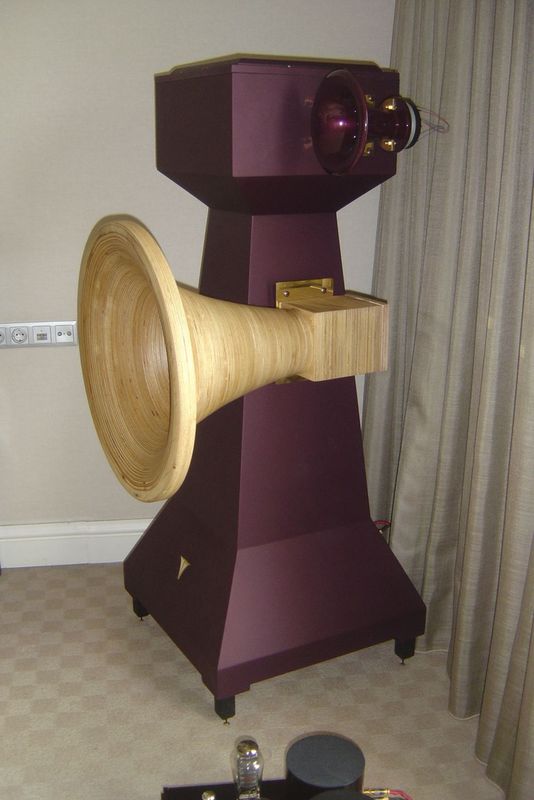|
|
skushino
Seattle, WA
Posts 93
Joined on 07-07-2004
|
Post #:
|
1
|
|
Post ID:
|
18501
|
|
Reply to:
|
18501
|
|
|
|
Vertical Axis Midbass Horn
|




|
|
|
|
|
fiogf49gjkf0d I've had a long-time desire to replace my Edgar 80hz midbass shells with a better performing solution. My Edgarhorns arrived in 2005, and I made incremental improvements over the years until now they have little in common with the original Edgarhorns, besides the MR and 80hz horns. The MR will be replaced in the future, and replacing the 80 hz horns is the subject of this post. There's a fuller description of my current configuration in a past post. My bass is actually listenable now as is, due to a lot of effort, many failed experiments, and two or three successes. But it could still be better. I think much better... The problem, like anyone who dabbles with horns knows, is coexisting with bass horns in a typical residential listening room. Mine is 15' x 18' x 8'. I've exhausted the typical solutions and discarded each for various reasons: front loaded horns, folded horns, onken box, sealed box, and line arrays.
The purpose of this post is to explore bass-sized vertical-axis horns, as used by Bruce in his subwoofer and Slimline designs, and more recently by Tuneaudio Anima. My desire is to use a pair of bass horns for each channel, both vertically oriented, one each exhausting to the floor and the ceiling. I have an idea that spatial presentation will gain a big boost with both up and down firing bass horns. bty I had the Edgar subwoofer and it sounds surprisingly good, considering everything. Like a helicopter that looks like it shouldn't fly but does, the Edgar Seismic Sub looks like it can't sound good, but does. It could be straightforward to fabricate a pair of 55hz horns,
around 5' long, same sized mouth as Anima (~1100 sq in, 8 sq ft), with one pointing up and one down. A second pair would be made to complete the bass channel.
The Anima was discussed here in the past:
http://www.goodsoundclub.com/Forums/ShowPost.aspx?PageIndex=1&postID=12129#12129

My Goals:
- Replace Edgar 80hz horns
- No folded horn architecture
- Both floor and ceiling loading for full spatial reproduction
- Gain horn eq down to 50 - 60 hz
- Limit sub bass upper cutoff to ~40 - 50hz
- Hf upper limit ~ 300hz for 180hz crossover to lower midrange channel
My Concerns:
- Which driver to use? 12" - 15" are the obvious choices to balance low-end displacement and seamlessly match lower midrange @ 200hz
- Time alignment with other channels. Need clarity on how to measure. Is it distance from driver to listener, or need to include horn path length in consideration?
- Hf limit
- Imaging and soundstage considerations with horns not pointing at listener
- Driver cone sag in vertical orientation. Is this a credible concern or too much hand wringing about nothing?
I'll post more thoughts on this topic in the future. IF anyone has first hand listening experience with the Anima, or other design considerations to share, I would like to hear your feedback.
|
|
|